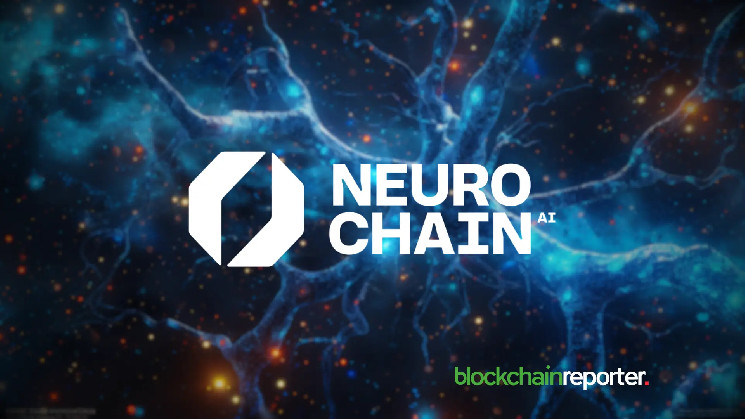Proof of Work (PoW) has been a cornerstone of blockchain technology since the beginning of Bitcoin. Its role in ensuring network security and integrity through computational effort has proven invaluable. However, as blockchain applications expand, especially into the realm of artificial intelligence (AI), PoW is advancing to meet new challenges and opportunities. As blockchain applications evolve, particularly in decentralized AI platforms like NeurochainAI, PoW is adapting to new challenges. By integrating PoW with Proof of Stake (PoS) through the Proof of Work through Staking (PoWtS) model, NeurochainAI is redefining how AI computations are validated.
Understanding Proof of Work
PoW is a consensus algorithm whereby participants, known as miners, engage in solving algorithmic problems. The miner that solves the puzzle gets to add the block of transactions to the chain and earns cryptocurrency as a reward for his efforts. This is a time-consuming process, which guarantees that the addition of new blocks will also be a time-consuming and secure process.
PoW’s Role in Decentralized AI
The emergence of decentralized AI platforms like NeurochainAI indicates how the role of PoW is changing. In such systems PoW is not only used to secure the transactions but also to validate the AI computations. NeurochainAI combines PoW with a decentralized GPU pool where participants utilize their consumer hardware for AI computations. It changes the original PoW into a way of both protecting and verifying the computations performed by an AI.
The Integration of PoW and Proof of Stake
NeurochainAI uses PoW alongside Proof of Stake (PoS) in a combined system called Proof of Work through Staking (PoWtS). In this system, AI Mining Nodes perform compute tasks for reward as PoW. On the other hand, Neuron Validator Nodes use PoS for validation. This integration guarantees safe and fast AI computations and benefits from the energy-saving properties of PoS.
The Evolution and Future of PoW
However, one of the major concerns regarding PoW has been its energy consumption throughout history. The integration with AI and PoS provides heightened security and efficiency, compared to the previous model. This evolution is important because AI applications need vast amounts of computer processing power as well as strict validation of the tasks they perform.
PoW’s future in AI will probably lie in improving its efficiency of using the resources and its compatibility with other types of consensus mechanisms. This way, PoW can remain a vital part of the decentralized AI paradigm by addressing high energy demand and scalability.
NeurochainAI to Revolutionize AI with an Innovative Proof of Work and Proof of Stake Integration
Currently, NeurochainAI is transforming the approach to the creation of AI, including the integration of Proof of Work (PoW) and Proof of Stake (PoS) in the blockchain structure to ensure deep decentralization of the AI system. In addition to its distinct L1 and L3 solutions, the platform integrates these layers seamlessly to guarantee scalability.
Proof of Work (PoW) is a basic consensus mechanism in which the participants of the network, referred to as miners, verify transactions and add them to the blockchain by solving complex mathematical problems. This process also helps to defend the network and maintain its stability as it demands a significant amount of computational capability. Members are encouraged to mine as it provides them with financial benefits hence improving the reliability of the network.
Proof of Stake (PoS) is another algorithm that is less power consuming as compared to the Proof of Work algorithm. In PoS, the block validation is done based on the amount of tokens possessed by each participant. It means the more tokens a node stakes the more probability it has to solve a new block. This method is more efficient than PoW in terms of energy consumption but has a different reward model.
Efficient AI Computation and Validation with PoWtS on NeurochainAI
NeurochainAI makes use of these mechanisms in a rather different way by employing the Proof of Work through Staking (PoWtS). Here, PoW is utilized in AI computations at the L3 layer. Meanwhile, PoS checks those computations on the L1 NCN Chain. This approach has proved effective in ensuring secure and verifiable results while, at the same time, scaling the network properly.
NCN Chain (L1) is part of the platform architecture and is based on EVM and Optimistic Rollups to provide necessary security and performance improvements. This layer is fundamental to operations of validation and connectivity of networks and systems. NCN AI or Layer 3 addresses tasks and features related to AI where data are computed using GPUs and NPUs from the community.
Conclusion
Proof of Work (PoW) has been vital in blockchain technology by providing security and integrity. With the rise of decentralized AI platforms like NeurochainAI, PoW is evolving to handle new challenges by integrating with Proof of Stake (PoS) in a model called Proof of Work through Staking (PoWtS).
This hybrid approach combines the strengths of PoW and PoS. It also improves both security and efficiency. As AI and blockchain technology advance, PoW will continue to adapt. In this way, it will keep focus on resource efficiency and scalability. At the same time, it will also maintain its crucial role in validating decentralized systems.







Leave a Reply